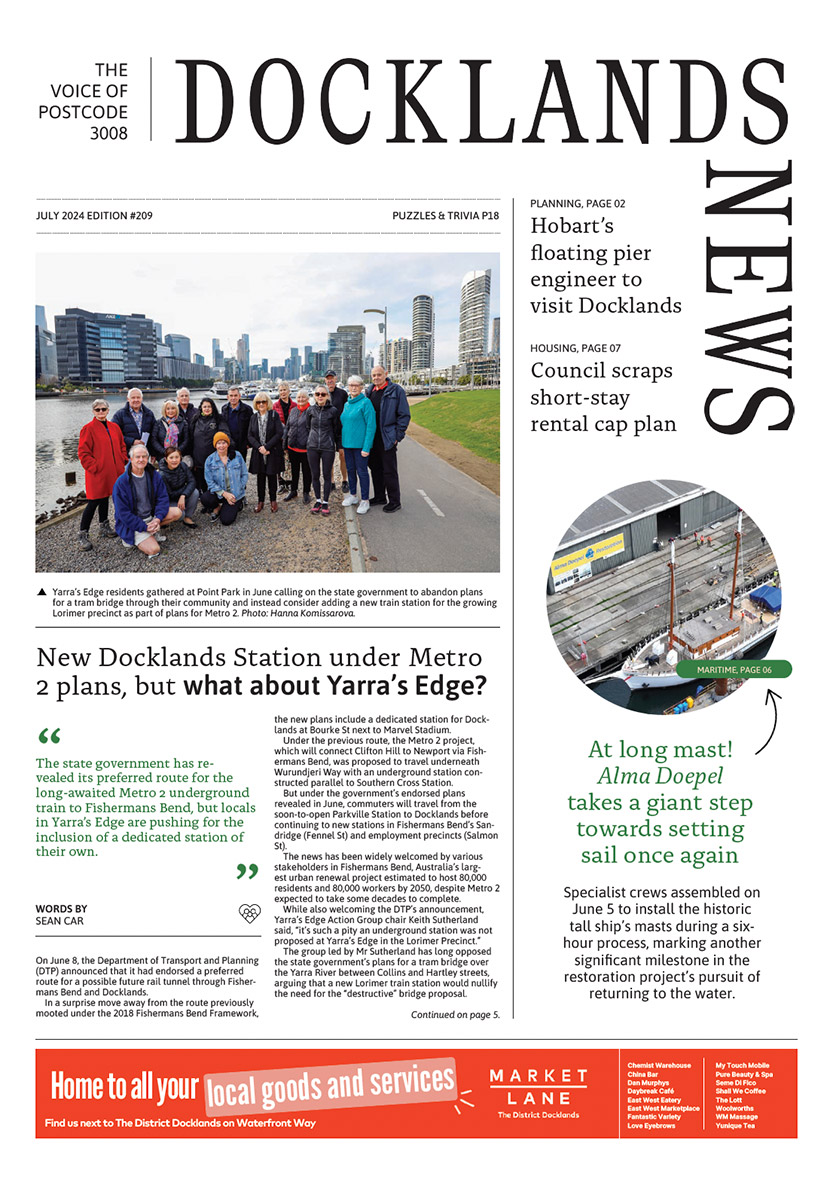Radical retrofits
Ninety-nine percent of Docklanders reside in apartments, and a growing number of their residential buildings are fast approaching their two-decade mark.
As more and more apartment buildings head towards their 20s, owners’ corporations (OCs) are (or should be!) turning their attention to upgrades.
Tier 1 buildings (which are classified as more than 100 occupiable lots – the main category of residential building in Docklands) and Tier 2 buildings (51 to 100 occupiable lots) are required to have maintenance plans. This suggests some thought has been given to common property replacements.
Unfortunately, maintenance plans often fail to promote strategic thinking.
According to an increasing number of voices, fostering strategic thought is crucial for the transformation of our residential buildings into more energy-efficient and financially sustainable entities. In line with this, last month a representative from the Docklands Representative Group (DRG) took part in two seminars which focused on strategic retrofits and transitions.
One event, The Retrofit Symposium, was hosted by University of Melbourne’s Faculty of Architecture. This is an annual event which brings together academic, government and industry experts to help set the national research agenda for the transformation of Australian cities.
Noteworthy aspects included the pragmatics of redesign, which spanned approaches from collaborating with First Nations designers (beyond artwork) to accessibility and useability redesign for different cohorts (i.e., beyond the ramp).
However, it was the event hosted by the EEC (Energy Efficiency Council – the peak body for Australia’s energy management sector) that shouted the message about “getting off gas”.
It must be said that, disappointingly, apartments did not feature strongly in many of the speakers’ presentations. The exception was the City of Sydney representative, who spoke loudly and strongly about the imperative for policy makers to understand the residential strata sector and specifically include apartment buildings in their transition schemes.
In the case of gas, the danger is that residential strata will be left behind as other parts of the residential sector are funded to transition away from gas. As it stands, Docklands’ existing residential stock is facing a cocktail of three issues:
- New residential builds (in a growing number of jurisdictions) are not incorporating gas infrastructure;
- Schemes are being designed for residential housing (not apartments) to transition away from gas; and
- Many service providers to existing residential buildings continue to promote gas upgrades (such as for hot water systems), citing the lack of “viable options”.
Together, this locks residential strata into gas. This then places the burden of future transition costs onto apartment owners. But more than this, OCs will be saddled with the burden of supporting a legacy gas network, with a diminishing number of consumers to share associated costs.
Continued advocacy on this matter is essential, and OCs must be actively engaged in fostering strategic initiatives to enable the transition of their residential strata buildings. The DRG will continue to liaise with key stakeholders and stay abreast of developments. •

New Docklands Station under Metro 2 plans, but what about Yarra’s Edge?







 Download the Latest Edition
Download the Latest Edition